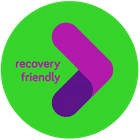Anxiety is an increasingly prevalent disorder among youth and adults in the United States. More than 40 million people suffer from some anxiety disorder in the country. The prescription of medications to treat symptoms of mental disorders is increasing every year. In 2022, 16.7 million people were prescribed Xanax (commonly known as Xanax bars), a benzodiazepine, to treat anxiety, panic attacks, and insomnia symptoms.
The Food and Drug Administration (FDA) approved Xanax in 1981 to treat short-term generalized anxiety disorder, restlessness, and muscle tension. However, Xanax bars have a high risk of addiction and abuse.
Xanax is the most prescribed psychiatric medication in the United States, and users can find it in various forms, such as bars, tablets, or capsules. Xanax bars are known informally as “xannies” or “planks.” Today, many people use Xanax to treat medical problems and recreationally. In both cases, there is a risk of addiction and abuse.
At GateHouse Treatment, we strive to raise awareness of substance abuse issues and support those who wish to break free from the cycle of addiction. If you or someone you care about is experiencing symptoms of Xanax bars’ abuse and addiction, seeking professional help is vital. Abrupt and autonomous discontinuation of Xanax bars use can be extremely dangerous and have potentially life-threatening consequences.
How Addictive Are Xanax Bars?
The U.S. government designates benzodiazepines, including alprazolam, as Schedule IV controlled substances under the Controlled Substances Act because of their high risk of misuse.
Dr. Leo Sternbach created Xanax in 1956, but starting in the 1980s, it became a prominent element of what is known as the opioid epidemic in the United States. Opioids are a category of painkillers that include marketed drugs such as oxycodone and hydrocodone and synthetic opioids such as fentanyl and heroin.
About 6 million people in the United States use Xanax bars for recreational purposes, with abuse among young adults between 18 and 25 being around 11%, the highest among all other age groups.
Xanax bars have a fast-acting relaxing effect. In about an hour, the concentration of Xanax in the body reaches its peak, contributing to its popularity and high addictive propensity. In a healthy adult, the body can eliminate about half the amount of Xanax absorbed in about 11 hours. These characteristics increase its addictive potential.
Xanax influences the brain and central nervous system by enhancing a brain substance known as gamma-aminobutyric acid, which produces a feeling of calm and relaxation. Xanax addiction can develop quickly, especially if taken recreationally. Medical studies about Alprazolam show that all benzodiazepines have the potential for misuse, increased tolerance, and physical dependence.
When discontinuing Alprazolam, withdrawal symptoms seem more intense than other benzodiazepines because of its shorter half-life and strong potency, leading to a pronounced rebound craving.
What are the Symptoms of Xanax Addiction?
People who use Xanax bars can become physically dependent on this drug, especially if they take it every day or very often. Users can identify physical dependence on Xanax bars when the body no longer functions appropriately without Xanax.
Developing an addiction to Xanax involves physical dependence and consumption of Xanax bars despite experiencing harmful consequences. People with previous addictions or substance use disorders are particularly at risk.
If you or a loved one are taking Xanax bars and have these symptoms, there is cause for addiction concerns:
- Drowsiness
- Slurred speech
- Problems with thinking and coordination
- Problems at school
- Problems at work
- Obsessive behavior with Xanax bars
- Withdrawal symptoms when not taking Xanax, such as body pain, intense anxiety, sweating, irregular heart rate
- Seeking help to get more Xanax bars
- Feelings of depression
- Irritability
Reducing Xanax slowly with professional help minimizes the severity of these symptoms.
Is it Possible to Overdose on Xanax Bars?
The risk of overdose when using Xanax is significantly high, especially when combined with alcohol and opioids, which can have fatal consequences. This practice is on the rise, and in 2021, the CDC related 14% of opioid overdose deaths to benzodiazepine use. Additionally, more than 50% of patients presenting to the emergency department had combined Xanax with other substances.
The first symptoms of Xanax overdose are the same as those of addiction. In case of any overdose symptoms, prompt assistance from a healthcare professional is necessary. However, severe symptoms of overdose with Xanax include:
- Extreme confusion
- Severe coordination problems
- Inability to stay awake
- Slow and difficult breathing
- Unresponsiveness
- Coma
If a loved one has these symptoms, call 911 immediately and place this person on their side to avoid the risk of choking.
What Should You Do if You Suspect a Loved One Is Addicted to Xanax Bars?
If a person consumes Xanax in higher doses and frequencies than medically prescribed and experiences signs of abuse or addiction, it is imperative to seek professional assistance. Addiction and abuse of Xanax bars are treatable, and it is critical to emphasize the importance of doing so under the supervision of a professional, as withdrawal symptoms can be complex and potentially life-threatening.
- Communication and listening: Maintain open and empathetic conversation with the person, avoiding any judgment or criticism. Actively listen to their feelings and experiences.
- Offer support: Accompanying them in this process is fundamental; let them know they are not alone.
- Seek professional help: Addiction, like any disease, requires treatment. In the case of the use of Xanax bars, it is essential to seek the assistance of a professional specialized in addictions.
- Learn about addiction: Educate yourself about drugs and addiction to better understand your loved one and offer adequate support.
- Be patient: Getting clean from substance abuse is a long and complex process, but the results are gratifying in many cases.
What Are the Withdrawal Symptoms of Xanax?
These symptoms can be highly complex and may manifest hours after the last dose:
- Recurrence of intensified anxiety symptoms
- Panic attacks
- Hyperventilation
- Difficulty falling asleep
- Sweating
- Sensitivity to light, sound, and touch
- Feeling of disconnection from the body
- Tremors
- Seizures
- Psychosis
- Coma
It is important to note that some Xanax withdrawal symptoms can be life-threatening, so seeking professional help is always the wisest recommendation. There is a treatment program near you for Xanax addiction.
GateHouse Treatment Can Treat Xanax Addiction
Approximately 31.1% of adults in the United States face some anxiety disorder at some point. If you have been prescribed Xanax bars by your medical provider, and you or someone you love has experienced the symptoms of addiction mentioned in this blog post, we encourage you to contact us at (855) 448-3588 to get started on the path to a Xanax-free life.
- Fentanyl Misuse: Awareness and Prevention - March 14, 2025
- High-Functioning Alcoholic: 5 Steps to Identify if You Are One of Them - February 23, 2025
- Rehab and Cancer Prevention: How Overcoming Addiction Reduces Risk - February 11, 2025




